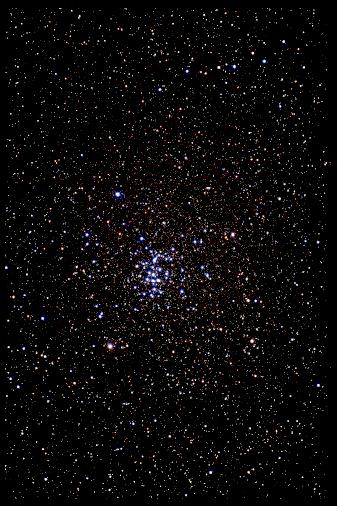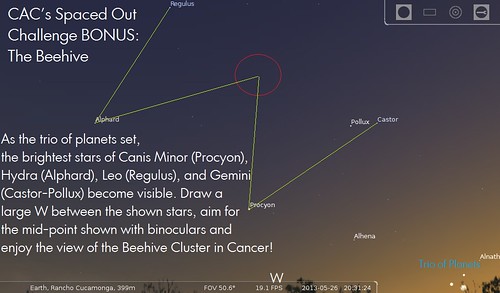Intermarkets' Privacy Policy
Support
Donate to Ace of Spades HQ!
Contact
Ace:aceofspadeshq at gee mail.com
Buck:
buck.throckmorton at protonmail.com
CBD:
cbd at cutjibnewsletter.com
joe mannix:
mannix2024 at proton.me
MisHum:
petmorons at gee mail.com
J.J. Sefton:
sefton at cutjibnewsletter.com
Recent Entries
We Wish You A Merry ONTmas
Frustration Be Gone Cafe
In Fulton County, Georgia -- Big Fani's Home County -- 315,000 "Votes" Were Counted Despite Missing the Necessary Signatures
Feds Discover Another $9 Billion in Medicaid Fraud... All in Tim Walz's Pirate Paradise of Minnesota
Open Thread
Open thread
Open thread
315,000 Possibly Fraudulent Ballots? Eh...It's Business-As-Usual In Georgia!
Open thread
Open Thresd
Frustration Be Gone Cafe
In Fulton County, Georgia -- Big Fani's Home County -- 315,000 "Votes" Were Counted Despite Missing the Necessary Signatures
Feds Discover Another $9 Billion in Medicaid Fraud... All in Tim Walz's Pirate Paradise of Minnesota
Open Thread
Open thread
Open thread
315,000 Possibly Fraudulent Ballots? Eh...It's Business-As-Usual In Georgia!
Open thread
Open Thresd
Absent Friends
Jay Guevara 2025
Jim Sunk New Dawn 2025
Jewells45 2025
Bandersnatch 2024
GnuBreed 2024
Captain Hate 2023
moon_over_vermont 2023
westminsterdogshow 2023
Ann Wilson(Empire1) 2022
Dave In Texas 2022
Jesse in D.C. 2022
OregonMuse 2022
redc1c4 2021
Tami 2021
Chavez the Hugo 2020
Ibguy 2020
Rickl 2019
Joffen 2014
Jim Sunk New Dawn 2025
Jewells45 2025
Bandersnatch 2024
GnuBreed 2024
Captain Hate 2023
moon_over_vermont 2023
westminsterdogshow 2023
Ann Wilson(Empire1) 2022
Dave In Texas 2022
Jesse in D.C. 2022
OregonMuse 2022
redc1c4 2021
Tami 2021
Chavez the Hugo 2020
Ibguy 2020
Rickl 2019
Joffen 2014
AoSHQ Writers Group
A site for members of the Horde to post their stories seeking beta readers, editing help, brainstorming, and story ideas. Also to share links to potential publishing outlets, writing help sites, and videos posting tips to get published.
Contact OrangeEnt for info:
maildrop62 at proton dot me
maildrop62 at proton dot me
Cutting The Cord And Email Security
Moron Meet-Ups
TBD
« Evening Open Thread |
Main
| Overnight Open Thread (5-22-2013) »


DSS image of M44
Finding it without a dark sky can be alitle tricky, but thankfully there are some rather bright stars than can show you the way. Those living in rural areas should be able to pick out the faint constellation Cancer, but I kept the map set for those of us in the suburbs:

May 22, 2013
CAC's Spaced Out Challenge: A Triple Planet Treat, Bees & a Peek at ISON
The last few editions have featured objects you can't really enjoy naked-eye, but that changes with a special grouping of three planets this Sunday. All you need to see the trio are your eyes and a clear western/ west-northwestern horizon.

With the moon full or damn close to it this week/weekend, most deep sky objects save for double stars and clusters aren't worth the hunt, particularly in urban areas. With a pair of binoculars though, you can enhance your view of the planetary meet-up, eyeing the faint moons of Jupiter for a few minutes before the trio dips below the horizon. This week is the last good one this year for spotting the largest planet in the solar system in evening skies, and your best for eyeing Mercury, the smallest. Venus will hang around a bit longer, and Saturn continues to quietly drift along in Virgo.
Co-blogger rdbrewer sent over a link teasing a first look at Comet Ison, still on track to be visible naked eye in November, courtesy the Slooh Space camera here.
A few 'rons have mentioned the late Jack Horkheimer in the spaced threads. I found a video featuring another rare trio of worlds from 1991 (hint-hint: this stuff doesn't happen that often), and, well, I can see why some of you have mentioned him. He's very, very enthusiastic:
As an added bonus, keep your eyes on the sky after the trio, and if you live in an urban area, keep your binoculars handy for one of the oldest-known and beautiful clusters in the sky, Praesepe, more commonly called the Beehive:

Finding it without a dark sky can be alitle tricky, but thankfully there are some rather bright stars than can show you the way. Those living in rural areas should be able to pick out the faint constellation Cancer, but I kept the map set for those of us in the suburbs:

As always, for your astronomical needs be sure to hit up the Ace storefront right up their in yonder corner, check out the FULP object list for suburban/urban amateurs, clear skies to you, and keep looking up!
Next week: finding the dark secret of the swan
Recent Comments
publius, Rascally Mr. Miley (w6EFb):
">> If a .223 is fired at a 5° elevation will ..."
RickZ: "[i]I haven't been watching the news or social medi ..."
ChristyBlinkyTheGreat: "235 ChristyBlinkyTheGreat, I've seen websites that ..."
Joyenz: "Evening all, Loved the puppy training video. R ..."
Romeo13: "Well, you are not as old as dirt like some of us,s ..."
man: ""Can't get enough of your love baby..." ..."
nerdygirl: "[i]I do so much love how President Trump seems to ..."
RickZ: "[i]Well, you are not as old as dirt like some of u ..."
man: "Rub it in" Right on. *cues up Barry White* ..."
Romeo13: "223 205 One thing we boomers will always have. By ..."
ChristyBlinkyTheGreat: "233 223 205 One thing we boomers will always have. ..."
Braenyard - some Absent Friends are more equal than others _ : "It's a man's world. youtube.com/watch?v=GaB9F3R ..."
RickZ: "[i]I haven't been watching the news or social medi ..."
ChristyBlinkyTheGreat: "235 ChristyBlinkyTheGreat, I've seen websites that ..."
Joyenz: "Evening all, Loved the puppy training video. R ..."
Romeo13: "Well, you are not as old as dirt like some of us,s ..."
man: ""Can't get enough of your love baby..." ..."
nerdygirl: "[i]I do so much love how President Trump seems to ..."
RickZ: "[i]Well, you are not as old as dirt like some of u ..."
man: "Rub it in" Right on. *cues up Barry White* ..."
Romeo13: "223 205 One thing we boomers will always have. By ..."
ChristyBlinkyTheGreat: "233 223 205 One thing we boomers will always have. ..."
Braenyard - some Absent Friends are more equal than others _ : "It's a man's world. youtube.com/watch?v=GaB9F3R ..."
Recent Entries
We Wish You A Merry ONTmas
Frustration Be Gone Cafe
In Fulton County, Georgia -- Big Fani's Home County -- 315,000 "Votes" Were Counted Despite Missing the Necessary Signatures
Feds Discover Another $9 Billion in Medicaid Fraud... All in Tim Walz's Pirate Paradise of Minnesota
Open Thread
Open thread
Open thread
315,000 Possibly Fraudulent Ballots? Eh...It's Business-As-Usual In Georgia!
Open thread
Open Thresd
Frustration Be Gone Cafe
In Fulton County, Georgia -- Big Fani's Home County -- 315,000 "Votes" Were Counted Despite Missing the Necessary Signatures
Feds Discover Another $9 Billion in Medicaid Fraud... All in Tim Walz's Pirate Paradise of Minnesota
Open Thread
Open thread
Open thread
315,000 Possibly Fraudulent Ballots? Eh...It's Business-As-Usual In Georgia!
Open thread
Open Thresd
Search
Polls! Polls! Polls!
Frequently Asked Questions
The (Almost) Complete Paul Anka Integrity Kick
Primary Document: The Audio
Paul Anka Haiku Contest Announcement
Integrity SAT's: Entrance Exam for Paul Anka's Band
AllahPundit's Paul Anka 45's Collection
AnkaPundit: Paul Anka Takes Over the Site for a Weekend (Continues through to Monday's postings)
George Bush Slices Don Rumsfeld Like an F*ckin' Hammer
Paul Anka Haiku Contest Announcement
Integrity SAT's: Entrance Exam for Paul Anka's Band
AllahPundit's Paul Anka 45's Collection
AnkaPundit: Paul Anka Takes Over the Site for a Weekend (Continues through to Monday's postings)
George Bush Slices Don Rumsfeld Like an F*ckin' Hammer
Top Top Tens
Democratic Forays into Erotica
New Shows On Gore's DNC/MTV Network
Nicknames for Potatoes, By People Who Really Hate Potatoes
Star Wars Euphemisms for Self-Abuse
Signs You're at an Iraqi "Wedding Party"
Signs Your Clown Has Gone Bad
Signs That You, Geroge Michael, Should Probably Just Give It Up
Signs of Hip-Hop Influence on John Kerry
NYT Headlines Spinning Bush's Jobs Boom
Things People Are More Likely to Say Than "Did You Hear What Al Franken Said Yesterday?"
Signs that Paul Krugman Has Lost His Frickin' Mind
All-Time Best NBA Players, According to Senator Robert Byrd
Other Bad Things About the Jews, According to the Koran
Signs That David Letterman Just Doesn't Care Anymore
Examples of Bob Kerrey's Insufferable Racial Jackassery
Signs Andy Rooney Is Going Senile
Other Judgments Dick Clarke Made About Condi Rice Based on Her Appearance
Collective Names for Groups of People
John Kerry's Other Vietnam Super-Pets
Cool Things About the XM8 Assault Rifle
Media-Approved Facts About the Democrat Spy
Changes to Make Christianity More "Inclusive"
Secret John Kerry Senatorial Accomplishments
John Edwards Campaign Excuses
John Kerry Pick-Up Lines
Changes Liberal Senator George Michell Will Make at Disney
Torments in Dog-Hell
Greatest Hitjobs
The Ace of Spades HQ Sex-for-Money Skankathon
A D&D Guide to the Democratic Candidates
Margaret Cho: Just Not Funny
More Margaret Cho Abuse
Margaret Cho: Still Not Funny
Iraqi Prisoner Claims He Was Raped... By Woman
Wonkette Announces "Morning Zoo" Format
John Kerry's "Plan" Causes Surrender of Moqtada al-Sadr's Militia
World Muslim Leaders Apologize for Nick Berg's Beheading
Michael Moore Goes on Lunchtime Manhattan Death-Spree
Milestone: Oliver Willis Posts 400th "Fake News Article" Referencing Britney Spears
Liberal Economists Rue a "New Decade of Greed"
Artificial Insouciance: Maureen Dowd's Word Processor Revolts Against Her Numbing Imbecility
Intelligence Officials Eye Blogs for Tips
They Done Found Us Out, Cletus: Intrepid Internet Detective Figures Out Our Master Plan
Shock: Josh Marshall Almost Mentions Sarin Discovery in Iraq
Leather-Clad Biker Freaks Terrorize Australian Town
When Clinton Was President, Torture Was Cool
What Wonkette Means When She Explains What Tina Brown Means
Wonkette's Stand-Up Act
Wankette HQ Gay-Rumors Du Jour
Here's What's Bugging Me: Goose and Slider
My Own Micah Wright Style Confession of Dishonesty
Outraged "Conservatives" React to the FMA
An On-Line Impression of Dennis Miller Having Sex with a Kodiak Bear
The Story the Rightwing Media Refuses to Report!
Our Lunch with David "Glengarry Glen Ross" Mamet
The House of Love: Paul Krugman
A Michael Moore Mystery (TM)
The Dowd-O-Matic!
Liberal Consistency and Other Myths
Kepler's Laws of Liberal Media Bias
John Kerry-- The Splunge! Candidate
"Divisive" Politics & "Attacks on Patriotism" (very long)
The Donkey ("The Raven" parody)

